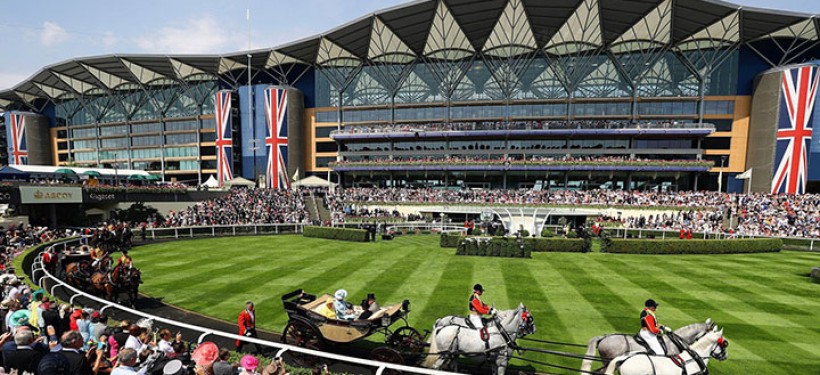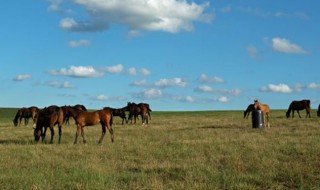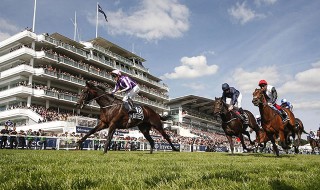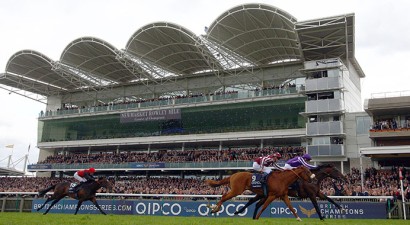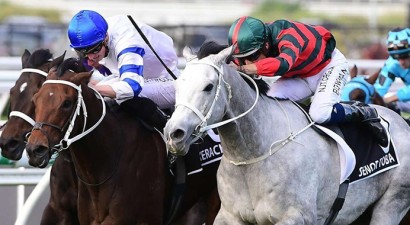Royal Ascot 2021 Betting Odds Comparison & Tips
Royal Ascot 2020 Racecards & Betting Tips
The 2020 Royal Ascot meeting might be a little different to normal due to the fact no racegoers will be in attendance for this prestigious sporting event, while the prize money is significantly lower due to the COVID-19 pandemic.
However, the horse racing during the five days at Royal Ascot promises to be something special and we take a look at the key races for each day of the meeting.
Day One – Tuesday 16 June
We’re always excited about the Royal Ascot opener which is the QUEEN ANNE Stakes and it’s an opportunity to see Circus Maximus in action, with the horse-trading as the favourite to claim victory in this Group 1 encounter.
The Aidan O’Brien-trained charge won the St James’s Palace Stakes last year and could take all the beating considering he bagged the Prix du Moulin de Longchamp last autumn before a creditable run in the Breeders’ Cup Mile.
The KING’S STAND STAKES is another classy affair and BATTAASH is seeing plenty of money, having finished second in the same race last year when being beaten by Blue Point.
Battaash scored wins at Goodwood and York after that performance although he disappointed when slumping at Longchamp in the competitive Prix de l'Abbaye de Longchamp Longines.
Day Two – Wednesday 17 June
The PRINCE OF WALES’S STAKES takes centre stage on Day Two of the 2020 Royal Ascot meeting, with Japan looking like the horse who will take all the beating.
The four-year-old triumphed in the King Edward VII Stakes last year at the Royal Ascot meeting and Aidan O’Brien is sure to have him in peak condition for this renewal.
Japan won the Juddmonte Grand Prix de Paris in Longchamp before scoring another victory in the Juddmonte International Stakes at York, although he wasn’t able to win in the Prix de l’Arc de Triomphe although the fourth place was still decent.
Barney Roy could be the biggest danger, with the Charlie Appleby-trained charge having enjoyed the benefit of two victories at Meydan in early January, although those with longer memories might remember an underwhelming performance in the Queen Anne Stakes last year.
Day Three – Thursday 18 June
The ASCOT GOLD CUP is clearly among the most prestigious races at Royal Ascot, with this being a long-distance race in Flat horse racing terms. Over a distance of two miles, three furlongs and 210 yards, it is a demanding test of stamina.
Stradivarius is bidding to make history in this year’s race by landing the Gold Cup for the third consecutive occasion. John Gosden clearly has a gem on his hands and we reckon that there’s no reason why we can’t see him crowed again.
He was given a warm-up run on 5 June where the horse finished third behind classy types such as Ghaiyyath and Anthony Van Dyck, with Frankie Dettori now likely to make sure he has a great race at the Royal meeting.
Day Four – Friday 19 June
We come to the penultimate day of the 2020 Royal Ascot meeting and the COMMONWEALTH CUP catches the eye, with Pierre Lapin currently trading as favourite and he’s likely to go off as market leader for this encounter.
The three-year-old hasn’t put a foot wrong thus far, although there have only been two performances, with Pierre Lapin winning a Novice Stakes’ race at Haydock Park before claiming the spoils in the Mill Reef Stakes at Newbury.
Earthlight is the second favourite with most bookmakers and the Godolphin horse has won five races on the bounce, with the Group 1 Juddmonte Middle Park Stakes the latest encounter where the horse shone.
Day Five – Saturday 20 June
We could be in for a treat on the final day of Royal Ascot 2020 due to Wichita and Pinatubo clashing in the ST JAMES’S PALACE STAKES. The bookies are struggling to split the pair who might well run at the meeting before this Saturday race.
Pinatubo was recently seen competing in the 2,000 Guineas where the Charlie Appleby-trained charge finished third although we might forgive that performance after a long lay-off.
Previously to this, the horse scored six consecutive wins between May and October last year, although Wichita also boasts a strong track record and recently finished second in the 2,000 Guineas.
The Aidan O’Brien-trained charge franked the form with Pinatubo after finishing third behind this horse in the Dewhurst Stakes last October and we’re in for an intriguing renewal.
Whilst National Hunt fans look forward to the Cheltenham Festival, those who prefer their racing without obstacles undoubtedly anticipate Royal Ascot with great excitement. This sensational meeting’s unparalleled history and pageantry, plus the sheer quality and quantity of the racing, mean for many racing betting fans it is the biggest and best five days of the entire year.
Picking the highlights and major races of Royal Ascot is no easy task, with so many top-class contests featuring on the five daily cards. We’ll look at some of the key races in more detail but whichever race you want to bet on, from the eight Group Ones to the handicaps and everything else as well, our live racing odds comparison is the quickest way to make sure you get the best betting odds on all your picks.
Check out our odds comparison now, or read on for more information on this spectacular festival, as well as some strategic betting tips for landing winners in the biggest races at Royal Ascot.
Racing Highlights
Every day at Royal Ascot sees world-class horses, trainers and jockeys do battle, with the huge purse for many of the races attracting stars from all over the world. Horses from the USA, Australia, Japan and Europe regularly join the large British and Irish contingents. Royal Ascot takes place in June, starting on a Tuesday before concluding on the Saturday of that week and below are just some of the best races it has to offer.
Royal Ascot Group One Races
Queen Anne Stakes, 1m
King's Stand Stakes, 5f
St James's Palace Stakes, 1m
Prince of Wales's Stakes, 1m2f
Gold Cup, 2m4f
Commonwealth Cup, 6f
Coronation Stakes, 1m
Diamond Jubilee Stakes, 6f
There are 36 Group One Flat races on the British Horse Racing Authority’s schedule and eight, almost 25%, take place at the Royal Meeting. These eight races include those with great history, such as the Gold Cup (often called the Ascot Gold Cup), inaugurated in 1807, as well as much newer contests, such as the Commonwealth Cup, first, run as recently as 2015. They also vary greatly in length, with the Gold Cup contested over a trying two and a half miles, whilst the King's Stand Stakes is over the minimum distance of five furlongs.
One thing all of these races have in common though is that they have been worn by legends of the sport. The likes of Cape Cross and Frankel (Queen Anne Stakes), Brigadier Gerard and Rock of Gibraltar (St James's Palace Stakes – another Royal Ascot race also won by the mighty Frankel), Ouija Board (Prince of Wales's Stakes), Yeats (Gold Cup) and Black Caviar (Diamond Jubilee Stakes) have all won the biggest prizes at Royal Ascot.
Many of these Royal Ascot Group One-winning horses have gone on to become top sires and broodmares, further illustrating the value of a win at the biggest meeting of them all.
Other Group Class Races
Coventry Stakes - Group 2, 6f
Queen Mary Stakes - Group 2, 5f
Duke of Cambridge Stakes - Group 2, 1m
Norfolk Stakes - Group 2, 5f
Ribblesdale Stakes - Group 2, 1m4f
King Edward VII Stakes Group 2, 1m4f
Queen's Vase - Group 2, 1m6f
Hardwicke Stakes - Group 2, 1m4f
Hampton Court Stakes - Group 3, 1m2f
Jersey Stakes - Group 3, 7f
Albany Stakes - Group 3, 6f
Whilst these Group 2 and Group 3 contests don’t quite carry the same prestige, glory or prize money of the eight Group 1s, on any other card they would still be viewed as major races. For those that love horse racing betting these are serious highlights and such contests have been won by genuine equine stars such as 1971 Derby and Arc hero Mill Reef, 2000 Guineas victor Dawn Approach and many more.
Betting Strategies And Tips For Royal Ascot
With so many different races at Ascot over a huge variety of distances conditions, no single strategy can be used as a guide to try and find winners at the Royal Meeting. As ever though, the single, simplest way to improve your chances of making a profit overall is to use our racing odds comparison. This means you can quickly get the best betting odds available on any horse at Royal Ascot and thus maximise your returns on any winners you pick out.
Another key tactic is to take advantage of the various betting offers that are virtually guaranteed to be available. Royal Ascot is one of the biggest weeks of the year for bookies and as they compete against each other you can be sure there will be various promotions available. These range from free bets when you join to cashback deals, enhanced each-way terms and more and again are a great way to improve your overall profitability.
In general, Ascot is a fair course, with no huge bias towards any style of runner or draw and in addition, the going is rarely a major factor. The round course has a short run-in, so being well-placed is an advantage and that favours the more talented jockeys who can be relied on to get their positioning right.
As well as all the usual trends and statistics, with information availability going into overdrive for such a well-covered meeting, there are a couple more things to consider. First of all, it can often be worth going against the grain. Many punters based in the British Isles tend to favour the UK and Irish horses and this can sometimes lead to value on the international contingent.
Similarly, the likes of Frankie Dettori, Ryan Moore and other jockeys and trainers that are hugely popular with the public can tend to be over-backed, creating value odds and bets on their rivals.
Royal Ascot History
No other race meeting in the world can come close to the pomp, ceremony and history of Royal Ascot. A major feature of the British social season, Ascot features champagne aplenty, with chauffeur-driven limos and helicopters on standby to ferry the great and good to and from the course.
The Queen and other members of the Royal family make a more sedate entrance, with each day starting with the Royal procession and seeing the Queen or her stand-in arrive by horse-drawn carriage.
It was Queen Anne who noted that the Berkshire venue was perfect for “horses to gallop at full stretch” and back in 1711 she laid the foundations for Royal Ascot. Her Majesty’s Plate was created and whilst the inaugural Gold Cup wasn’t held until 1807, almost 100 years later, by the late 18th century Ascot’s fashion had already been determined, with top hats in the Royal Enclosure and white cravats de rigueur.
Ladies Day was created in 1823, with the convention of the Royal Procession starting two years later. The Royal Meeting continued to grow and develop more and more key traditions and is quite simply a must for any racing fan.
From 2004 the course saw a huge redevelopment that created some of the best racing facilities in the world. After £200m of work the Queen opened the course in 2006 and Ascot is now most truly fit for a King (or Queen!).
This text 20 ARALıK 2021 It was written on.Other Blog Posts
Comments
No comment..
How about adding one comment now ?
